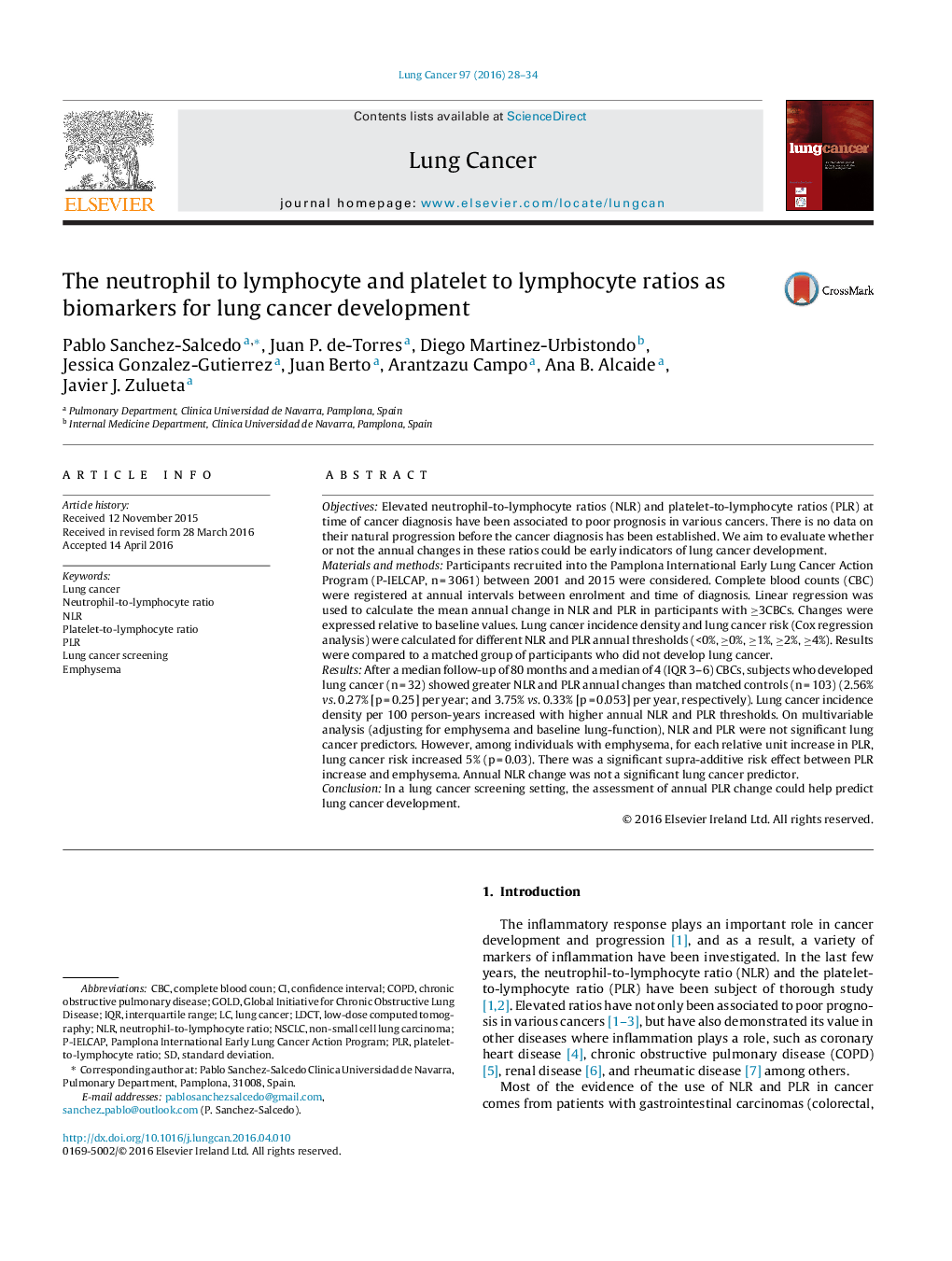| کد مقاله | کد نشریه | سال انتشار | مقاله انگلیسی | نسخه تمام متن |
|---|---|---|---|---|
| 2140488 | 1547970 | 2016 | 7 صفحه PDF | دانلود رایگان |
• Subjects who develop lung cancer have a more pronounced increase in annual NLR and PLR.
• Lung cancer incidence density is the highest in those with a more pronounced ratio increase.
• Annual PLR increase is a significant lung cancer predictor among individuals with emphysema.
• Annual PLR assessments could be of aid in a lung cancer screening setting.
ObjectivesElevated neutrophil-to-lymphocyte ratios (NLR) and platelet-to-lymphocyte ratios (PLR) at time of cancer diagnosis have been associated to poor prognosis in various cancers. There is no data on their natural progression before the cancer diagnosis has been established. We aim to evaluate whether or not the annual changes in these ratios could be early indicators of lung cancer development.Materials and methodsParticipants recruited into the Pamplona International Early Lung Cancer Action Program (P-IELCAP, n = 3061) between 2001 and 2015 were considered. Complete blood counts (CBC) were registered at annual intervals between enrolment and time of diagnosis. Linear regression was used to calculate the mean annual change in NLR and PLR in participants with ≥3CBCs. Changes were expressed relative to baseline values. Lung cancer incidence density and lung cancer risk (Cox regression analysis) were calculated for different NLR and PLR annual thresholds (<0%, ≥0%, ≥1%, ≥2%, ≥4%). Results were compared to a matched group of participants who did not develop lung cancer.ResultsAfter a median follow-up of 80 months and a median of 4 (IQR 3–6) CBCs, subjects who developed lung cancer (n = 32) showed greater NLR and PLR annual changes than matched controls (n = 103) (2.56% vs. 0.27% [p = 0.25] per year; and 3.75% vs. 0.33% [p = 0.053] per year, respectively). Lung cancer incidence density per 100 person-years increased with higher annual NLR and PLR thresholds. On multivariable analysis (adjusting for emphysema and baseline lung-function), NLR and PLR were not significant lung cancer predictors. However, among individuals with emphysema, for each relative unit increase in PLR, lung cancer risk increased 5% (p = 0.03). There was a significant supra-additive risk effect between PLR increase and emphysema. Annual NLR change was not a significant lung cancer predictor.ConclusionIn a lung cancer screening setting, the assessment of annual PLR change could help predict lung cancer development.
Journal: Lung Cancer - Volume 97, July 2016, Pages 28–34
